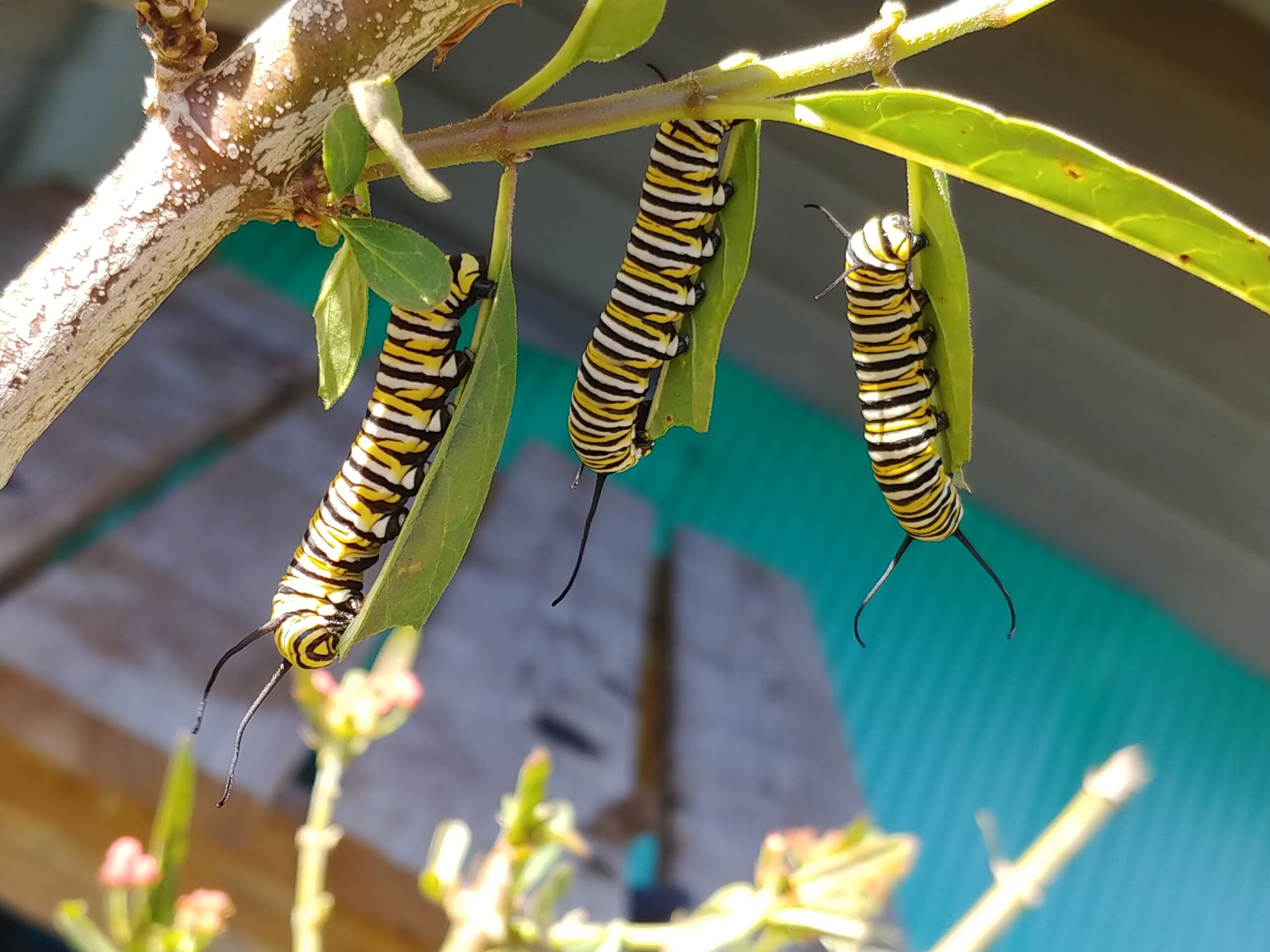Or
The Journey of Becoming: Exploring the Monarch Butterfly Caterpillar
In the miraculous cycle of life, the Monarch Butterfly, famed for its strikingly beautiful orange and black wings, begins as a humble caterpillar. Today, let’s take a sensory voyage and unearth the tactile, textural, and dimensional world of the Monarch caterpillar. Picture it not with your eyes, but through your mind’s touch, embarking on a journey of metamorphosis from a tactile perspective.
To visualize our wriggly protagonist, imagine holding a fine piece of jewelry, a delicate bracelet just over 2 inches long. This is the size of a full-grown Monarch caterpillar. It’s segmented, much like that bracelet, into rings running from head to tail, giving it flexibility and mobility.
Now, close your fingers around that imaginary bracelet. You can feel a series of bumps along its length. These represent the caterpillar’s body segments, typically numbering around 12.
The Monarch caterpillar wears an audacious costume, but for our journey, let’s perceive it through its texture rather than its color. The caterpillar’s skin is polished, akin to fine, matte satin, and dotted with pairs of tiny, cylindrical protrusions – a bit like miniature, soft toothbrush bristles. These are its tubercles, giving the caterpillar an intriguing, tactile pattern.
Our caterpillar is not a simple, smooth tube. Picture a doughnut and imagine its central hole stretching into a tube. This forms the caterpillar’s spiracles, tiny breathing pores lining its sides.
Now, shift your focus to its ends. The caterpillar’s head is more solid than the rest of its body – imagine the sensation of pressing gently against the end of an uncooked macaroni tube. The caterpillar’s tail end is softer, like the eraser on the end of a pencil, marking the location of the spinneret, from which it spins silk.
Two more distinct elements on the head bear mention. The caterpillar has six pairs of simple eyes, known as ocelli. Picture six pairs of minuscule bumps in a semicircular pattern on the head. There are also two short antennae at the top, like tiny, flexible straws poking out.
Finally, imagine a pair of tiny, opposing hooks, like miniature pairs of tongs – these are the caterpillar’s mandibles, ideal for chewing up leaves, primarily milkweed in the case of Monarch caterpillars.
Our journey brings us full circle around this fascinating creature, the Monarch caterpillar. Its existence, although seemingly simple, is filled with extraordinary detail and complexity. It may lack the Monarch butterfly’s vibrant colors and captivating elegance, but it is equally awe-inspiring, teeming with sensory intrigue. This remarkable creature, equipped with its bumpy body, satin-smooth skin, flexible antennae, and mini-mandibles, is the epitome of nature’s incredible magic of transformation.
